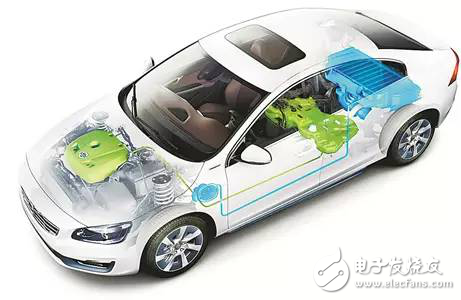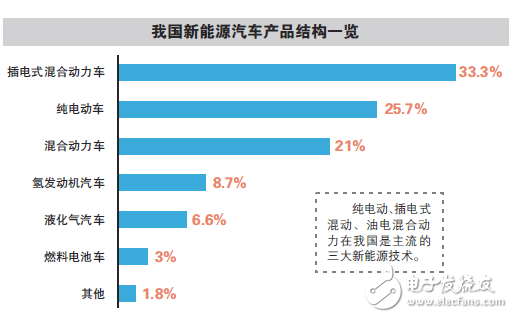
Privacy statement: Your privacy is very important to Us. Our company promises not to disclose your personal information to any external company with out your explicit permission.
Pure electric is considered to be the most authentic new energy technology without the help of any gasoline fuel. Plug-in hybrid technology, in the case of insufficient battery power reserve, can make up the battery mileage limit through its own gasoline engine. The hybrid electric power technology has the least degree of power intervention and can effectively reduce the consumption of gasoline. It is considered to be the best transitional form in the development of new energy.

At this year's Beijing Auto Show, the new energy vehicle is undoubtedly one of the highlights. A total of 147 new energy vehicles participated in the exhibition. The organizers also opened a new energy auto exhibition area in the 8th Hall of the Old National Exhibition, bringing together some famous domestic and international brands of electric vehicles. It will focus on the latest achievements of the Chinese and foreign auto industry in the design and manufacture of electric vehicles.
Under the background of urban pollution and energy depletion, new energy vehicles have become the future development trend. After more than 100 years of continuous development, new energy technologies have been continuously developed, batteries have been continuously miniaturized, and cruising range has been continuously extended. At present, pure electric vehicles that are driven by “internal aid” and plug-in hybrids and oil-electric hybrids that require “foreign aid” are still needed. Technology has formed the three mainstream technologies for the development of new energy vehicles.

Pure electric technology: the battery gradually fills the energy storage short board
In the mainstream three-new energy technologies of pure electric, plug-in hybrid and hybrid electric oil, pure electric is considered to be the most authentic new energy technology without the help of any gasoline fuel. Previously, as the only choice for batteries available for new energy vehicles at that time, lead-acid batteries were large in size, heavy in weight, low in energy density, low in power density, long in charging time, short in mileage after each charge, and high in power transmission manufacturing costs. As well as the drawbacks of safety hazards, lead-acid battery technology is only a product of the transition period of new energy vehicles.
With the sudden emergence of the US new energy vehicle Tesla in recent years, in addition to lithium iron phosphate batteries, ternary lithium battery technology has gradually entered the public eye. The longer cruising range is one of the characteristics of the ternary lithium battery, and the safety of the ternary material lithium battery has been improved and solved. At present, the ternary material adopts a 1:1:1 structure, and the structure is more stable. In addition, the ternary lithium battery is fabricated by an electrolyte and a special ceramic diaphragm technology. The ceramic diaphragm can be separated from the short-circuit source when the battery is internally short-circuited, thereby significantly improving the safety performance of the ternary lithium battery.
At this year's Beijing Auto Show, many participating models have fully used ternary material lithium batteries, and the minimum standard for cruising range has also increased from 100 km to 200 km. Among them, the self-owned brand of pure electric vehicles exhibits the strongest lineup. Jianghuai and Beiqi New Energy are all new products in the hot SUV and A-class market. Jianghuai is launching iEV6S pure electric SUV based on Ruifeng S2 at this Beijing Auto Show. The model uses an all-solid-state lithium-metal battery that can be fully charged in 11 hours by charging from a household power source. In terms of driving range, the Jianghuai iEV6S has a comprehensive driving range of 253km, while the 60km/h cruising range can reach 300km. Beiqi New Energy's new A0-class pure electric SUV model EX200 is based on the Beiqi Sic Bo X25, and its cruising range can reach 200 kilometers. The development of the Beiqi New Energy A-class pure electric SUV with the code name C51 EB reaches 300 kilometers.
At the same time, in the mainstream new energy sedan market, various auto companies are also intensively deploying new products in this segment. Jianghuai iEV7, Beiqi New Energy EU260, Beiqi New Energy EH400, FAW Pentium B30EV, Dongfeng popular S50EV, Dongfeng popular S500EV and other models all appeared at the Beijing Auto Show, and the cruising range reached more than 200 kilometers. Among them, Beiqi New Energy EU260 faces the A-class segment, with a cruising range of 260 kilometers. The EH400 is based on the Beiqi Sic Bo D80 and is positioned as a C-class luxury business sedan with a maximum cruising range of up to 400 km.
It is understood that according to the "Energy Conservation and New Energy Vehicle Industry Development Plan (2012-2020)" issued by the State Council, it is clearly stated that the "energy density requirement of the battery module is greater than 150 watt-hours/kg" and the ternary mileage is longer. Lithium battery technology will become the new development direction of new energy vehicles.
Plug-in hybrid technology: mature technology and low manufacturing cost
In the new energy vehicle promotion catalogue announced by the Ministry of Industry and Information Technology, in addition to the pure electric vehicles of “Gan Hong Miaozheng”, the emergence of plug-in hybrid models has been controversial. Unlike pure electric vehicles, which only rely on electric drive, plug-in hybrid technology can compensate for the mileage limit of the battery through the gasoline engine that is installed in the case of insufficient battery power reserve. When the battery's cruising range does not reach the level of the gasoline vehicle, Plug-in hybrid technology has become one of the most viable new energy vehicle development methods.
Compared with pure electric vehicles, the plug-in hybrid technology is basically the same, and it also needs to charge the battery to achieve pure electric mode. The only difference from the pure electric vehicle is that the model with plug-in hybrid technology is assembled. Engine. After the battery is exhausted, drive in a gasoline engine-based hybrid mode and charge the battery in due course. The industry believes that plug-in hybrid technology is also an inevitable outcome of the transition period of the new energy vehicle industry.
This year's Beijing Auto Show, regardless of foreign brands, independent brands are participating in its plug-in hybrid models. Among them, in terms of self-owned brands, only GA5 PHEV is a model of GAC, which is a model for sale. It brings the second hybrid model GS4 PHEV. This model is equipped with the same power system as the GA3S PHEV, 1.5-liter Atkinson cycle engine and G-MC advanced electromechanical coupling system, liquid-cooled battery system and advanced oil-cooled motor. The maximum pure electric range is more than 100 kilometers, and the total cruising range is greater than 500 km. At the same time, Chery's Tiggo 7 plug-in hybrid model is positioned higher than the Tiggo 5, equipped with P2 (single motor + dual clutch) structure plug-in hybrid system independently developed by Chery New Energy, which can realize pure electric drive mode and hybrid Switch between drive modes.
In fact, due to the addition of gasoline engines, plug-in hybrid technology is not considered a pure new energy vehicle. However, in the "12th Five-Year Plan" for the development of electric vehicle technology, pure electric drive vehicles are electric vehicles that are mainly driven by electric motors under all or most of the working conditions, and pure electric drive products include pure electric vehicles. Plug-in electric vehicles, extended-range electric vehicles, and fuel cell electric vehicles. At present, when the pure electric vehicle fails to solve the "mileage anxiety" of consumers, the plug-in hybrid technology can make the motor participate more in the driving process of the vehicle, which is also a product that conforms to the development trend of the new energy vehicle technology.
Oil-electric hybrid technology: recovering energy by means of engine
Compared with pure electric and plug-in hybrids, although the hybridization of electric and electric hybrid technology is the least, it can effectively reduce the consumption of gasoline and is considered to be the best transitional form in the development of new energy. The data shows that models with hybrid oil-electric hybrid technology save 40% of fuel. Vehicles equipped with this technology have engines and generators of comparable power, and drivers can choose between pure electric, hybrid and gasoline. While driving, the gasoline engine drives the drive motor to charge the battery.
At present, the hybrid technology of oil and electricity has developed more maturely, and most batteries have a long life. Because more engines provide power, the battery is used less, and there is no need to stop charging. The charging method can be optimized, the battery life is greatly extended, and the battery does not need to be replaced even when the vehicle is stopped.
Due to the complex structure of the hybrid electric power system, Japanese brands such as Toyota are unique in this field. Previously, after the launch of FAW Toyota Corolla "Double Engine" and GAC Toyota Rayling "Double Engine" two domestic hybrid electric vehicles, Toyota's new Prius appeared at the Beijing Auto Show. It is understood that the model is based on the Toyota TNGA platform. The hybrid system has been upgraded to a maximum power of 150 hp, which is 14 hp compared to the previous model. The increased battery capacity also increases the cruising range from 17.7 km in pure mode. To 56 kilometers.
It is worth mentioning that while Toyota continues to develop the hybrid electric power system, Geely, a self-owned brand, has also achieved breakthroughs in this field, launching a self-developed hybrid electric power system. At this year's Beijing Auto Show, Geely's first hybrid electric vehicle, the Emgrand EC7, was officially unveiled. The model has pure electric driving, fast start and stop, braking energy recovery, and hybrid driving functions including driving power generation and acceleration assist. The fuel consumption per 100 kilometers is only 4.9 liters, and the fuel saving rate has reached 35%. According to Geely's plan, by 2020, new energy vehicle sales will account for more than 90% of its overall sales; among them, plug-in hybrid and hybrid hybrid vehicles accounted for 65% of sales, pure electric vehicle sales accounted for Up to 35%.
February 13, 2023
February 10, 2023
이 업체에게 이메일로 보내기
February 13, 2023
February 10, 2023

Privacy statement: Your privacy is very important to Us. Our company promises not to disclose your personal information to any external company with out your explicit permission.

Fill in more information so that we can get in touch with you faster
Privacy statement: Your privacy is very important to Us. Our company promises not to disclose your personal information to any external company with out your explicit permission.